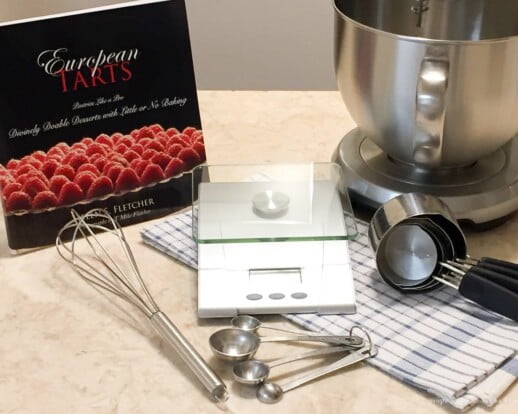
READING THE RECIPE
- Read baking recipes from the top to the bottom, so there will be no confusion about what to do. If something isn't clear, go back and re-read to see if you missed something.
- Well written recipes will have the ingredients listed in the order they are to be used. For instance, if a recipe calls for toasted nuts, they should be at the top of the ingredient list. They will then be ready when needed.
- Be aware of the differences in how the words and commas are used. A cup of flour, sifted, is different than a cup of sifted flour.
- In the first example, you would measure a cup of flour and then sift it. Depending upon what kind of flour, it will weigh between 125 grams or 4 ⅓ ounces and 140 grams or 5 ounces. In the second example, the flour would be sifted over the cup until overflowing and the excess swiped off. The weight of the flour will be between 100 grams or 3 ½ ounces and 125 grams or 4 ⅓ ounces. See the Ingredient Conversion Chart for more information.
- Also important, is that a cup of whole nuts will weigh differently than a cup of chopped nuts due to the chopped nuts being smaller so more will fit into the cup. However, if a recipe calls for 4 ounces of an item, then 4 ounces is 4 ounces, whole or chopped.
- Equally important, is following the directions as written when using a new recipe. Baking recipes are a balance of ingredients. Changing them willy-nilly can alter the outcome and not to the good. Also, if you are going to make changes, make only one at a time. That way you will know if something works or not.
MEASURING
- One of the most important things when using baking recipes is measuring all the ingredients before starting. This is called "mise en place" or everything in its place. There is nothing that can doom a recipe more quickly than leaving out an ingredient. Or, imagine having your egg whites whipped to the point sugar is needed and you don't have it ready. By the time you get the sugar, the egg whites will most likely be over whipped since the whites should not be turned off until they are beaten to the stage needed.
- My mantra has been to use scales for as long as I can remember. Long before it was fashionable, I started weighing dry ingredients in my first book, "The New Pastry Cook", published in 1985. More and more baking and pastry recipes are being written using weights. This is the surest way to succeed because ounces or grams are always the same. My preference is working in grams as there are no partial numbers as there are in ounces. Having said that, my baking recipes are written in volume, grams and ounces, so they are accessible to anyone in the world.
- Keep in mind liquid ounces are different than ounces by weight. They do not always coincide. Liquid measuring cups usually have a bit of space beneath the top and have a lip for pouring. Dry measuring cups should be filled to the top, sweeping off any excess if needed. Dry ingredients should not be measured in a liquid measuring cup.
OVEN
- With few exceptions, the oven needs to be preheated so when the pan goes into the oven the heat hits it immediately. Ovens are notoriously finicky which is why every baker should have an oven thermometer. Check the temperature of your oven every two or three weeks. If you don't want to have it calibrated, simply remember to add or subtract to get the right temperature. Mine has been off by 10°F less since we got it, so I just add 10°F to the called for temperature. I also check whatever is in the oven about 10 minutes before the end time called for in a recipe. That way if the writer's oven is out of whack, my product won't be ruined.
- You can always add time, but once something is overbaked it stays that way. I usually will give a range of times and try to give visual guides as well. Additional, testing for doneness can be done several ways. A cake tester or toothpick can be inserted in the middle of cakes and, generally, if it comes out clean it is done Touching the center lightly and having it spring back is another method. Color can be helpful, but the color alone will not tell you if it is done.
TERMINOLOGY
- Baking and pastry have its own terminology. Softening butter can also be referred to as room temperature. But, this can be misleading depending upon if you live in a hot or cold climate. Generally speaking, when I say room temperature butter I am referring to 72°F butter. I don't suggest microwaving butter unless done at short bursts, turning it frequently because it doesn't soften evenly. Worse, it often melts in the center. Melted butter should not be used when a recipe calls for softened butter. Better Butter for Baking talks about the properties of butter.
- Instructions often call for creaming, beating or whisking ingredients. Creaming will use the paddle, sometimes called the leaf paddle to combine ingredients, usually butter and sugar or eggs and sugar. While some air is incorporated in creaming, the main function of creaming is to bring together two or three ingredients so they become one. Beating also uses the paddle and is most often used when adding additional ingredients. The whisk attachment is used primarily for incorporating a great volume of air into egg whites or buttercreams. A third attachment usually comes with a stand mixer and that is the dough hook used for kneading bread.
- There is a difference between stirring and folding ingredients in baking recipes. Stirring just involves using a spoon or rubber spatula and moving the ingredients around to combine them.
- The purpose of folding is to combine a light, usually aerated mixture with a heavier mixture. The lighter mixture is poured on top of the heavier mixture, sometimes with flour or another ingredient to be folded in. A rubber spatula is plunged into the center of the bowl all the way to the bottom. The spatula is moved across the bottom of the bowl and up the nearest side, turning the mixture over so the heavier mixture is to top. The bowl is turned about an eighth of a turn while continuing the folding motion. It is important to fold gently as well as quickly with as few strokes as possible to keep the mixture from losing air which is often the only leavening agent used (as in sponge).
SPECIFIC INGREDIENTS
- When measuring brown sugar, either dark or light, it is usually packed into the cup. The reason brown sugar is and granulated sugar is not is because the brown sugar is fluffier due to the sugar being coated with molasses. More molasses for dark, less for light. Consequently, when it is put into a cup measure, there are air holes. These must be pressed out by filling the cup and pressing it down with the back of a spoon. Add more sugar, repeating the packing until the cup is full.
- Eggs are graded by size. Large eggs are normally used in baking and pastry but some books specify different sizes. Twelve size large eggs in their shells should weigh 24 ounces or 680 grams. But there is a catch. It does not mean each egg is 2 ounces. It means the 12 eggs must total 24 ounces or 680 grams even is some are smaller and some larger. In all the years I have baked, I have seen large yolks, small yolks and double yolks. I use large eggs and figure they will even out in the end.
- Egg whites are best beaten at room temperature for maximum volume. Beat them to the soft peak stage before adding the sugar slowly.
- Although most current recipes spell out teaspoons and tablespoons, they may also be found abbreviated. A small t or teaspoon = teaspoon. A capital T or tbl = tablespoon. Make sure when measuring dry ingredients with teaspoon or tablespoons, they are leveled off, preferably with the flat back of a knife.
- However flour is measured, it should be whisked, after measuring, to remove any lumps caused by the flour being compacted. Even though flours are sifted before being packed into bags, they have lumps. Rarely does a current recipe call for sifting flour, but whisking it will aerate it and remove the lumps.
- Cream should always be beaten right out of the refrigerator. Powdered sugar and flavoring can go into the cream at the start. There are generally three stages of whipped cream. Chantilly refers to cream that is just starting to hold its shape. Soft whipped refers to cream that increases in volume but when the beater is lifted, the peak curves downward. It is often used to top shortcakes or individual desserts. Cream can also be whipped to the stiff or firm stage, where, when the beater is lifted, the peaks stand straight up and the cream can be piped or used as frosting.
DIFFERENCE BETWEEN FORUMULAS AND RECIPES
- You may have heard of formulas and baking recipes and wonder what the difference is. For formulas, ingredients are measured by weight and given in percentages of 100%. Instructions are kept to a minimum. Recipes are used by home bakers. Because they often contain volume measurements, along with numbers of eggs and terms like packed brown sugar, it is possible for different outcomes by different bakers. It is often difficult to increase or decrease a recipe. However, formulas, because of their percentages can easily be adjusted ensuring a constant outcome.
More information on baking recipes can be found in Baking Information. Photos of equipment used in baking can be found in the linked post.


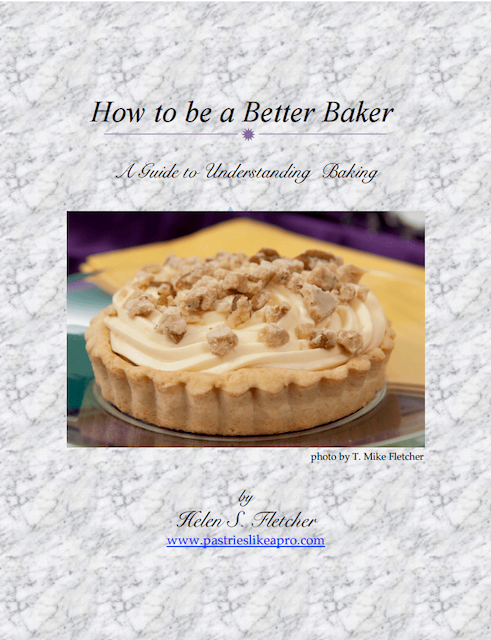

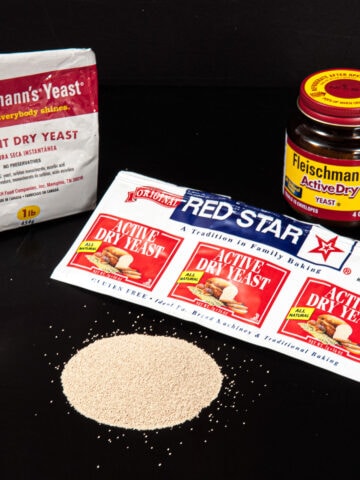
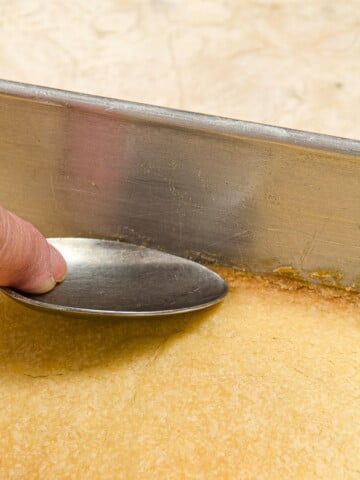
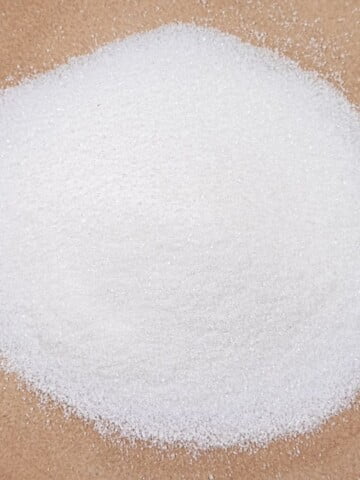
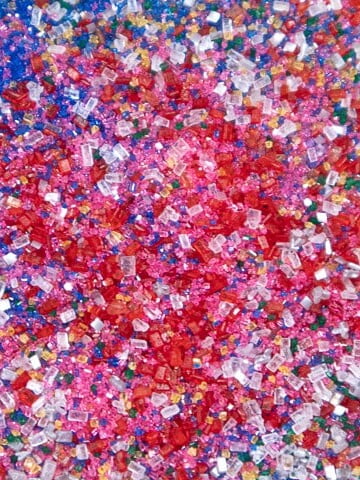
Janet Woodward says
These are true words of wisdom.
There are also differences in terminology between you USA folk....and the UK. (Plus....our Australian and NZ cousins).
Light corn syrup doesn't exist in the UK....
What does always please me...is the passion for good food....is universal.
May your puddings always rise...(I am referring to real Yorkshire puddings!!!)
As always...have fun....
Janet
PS Smokie crossed the Rainbow bridge back in April...I am still bereft....She was almost 20...and very spoiled...
hfletcher says
Hello Janet - So glad to hear from you. I realize the measurements can differ between Imperial and Australian but didn't want to cause confusion for my American readers.
So sorry to hear about Smokie. Are you going to find another cat to spoil?
Marisa Franca @ All Our Way says
We could not survive without our digital scale. That was one of our best investments in our kitchen. If a recipe uses cups I measure on the scale and add that for future use. It's so much easier. I do have a question for you. What recipe for chocolate drizzle on cookies would you suggest? I made a drizzle but it was a little bit thick -- it didn't drizzle quite like I wanted. Oh, the cookies are good and the drizzle doesn't look bad -- I just wanted to get more artistic. I didn't thin it -- I was afraid it wouldn't set up. Hope you had a great Labor Day Weekend.
hfletcher says
Hi Marisa - I generally just melt chocolate and drizzle it on the cookies while the chocolate is liquid. If I want to coat them I use the quick tempering method in the Almond Macaroons (https://pastrieslikeapro.com/2016/05/almond-macaroons/#.Wa7HLGVh2Rs).